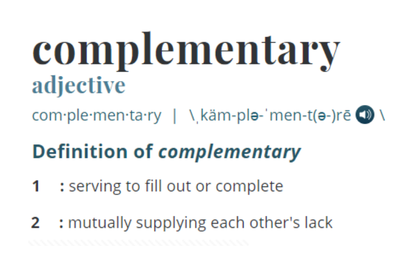|
Contributed by Liz O'Sullivan Recently, I was preparing a masonry architectural specification section for a remodel project. The project has an existing CMU wall which is to receive a small area of new CMU infill. It’s an exterior structural wall, and the architectural drawings indicate that the infill CMU is to be grouted solid. I asked the structural engineer if we need reinforcing bars (rebar) in the cores of the CMU. I told him that I would delete rebar from the spec section if we don’t need rebar, so that the Contractor knows he doesn’t need to provide it. The engineer said, “You can just leave it in the specs. If the rebar isn’t on the Drawings, they’ll know they don’t need it.” NNNOOOOOOOOOOOOOOOOOOOOO…..!!!!! Drawings and Specifications are complementary and what is called for by one shall be as binding as if called for by both.” This is according to the General Conditions of the Contract for this project. This is a typical provision in construction contracts. (1) So, if rebar isn’t required for that wall, there should be no rebar in the spec or on the drawings. If rebar is in the specs, even if it’s not on the drawings, rebar is required by the contract. If rebar is on the drawings, even if it’s not in the specs, rebar is required by the contract. Design professionals need to completely comprehend this concept, and for some unknown reason, many don’t. Contractors need to completely comprehend this requirement, and for an understandable reason (it’s not in their best interest at times) they don’t always seem to grasp this. The lead design professional on the project, the entity who is performing construction contract administration, is the party who must enforce the contract documents, including the specifications. This party has to understand the relationships among contract documents before he or she can properly enforce them. If the specifications and drawings have been prepared to be complementary, and are clear, concise, correct, and complete, they will be easy to understand (for all parties) and easy to enforce. Unless the design team intends for something to be included by the contractor in the project, it shouldn’t be in the specs (or drawings). There shouldn’t be a bunch of things in the specs ‘in case we need them’ if we don’t actually intend for them to be in the project, because by doing that, we’ve taken the first step to our documents’ not being taken seriously by the contractor. If there is extra information in the specifications, the contractor will assume that the specifications are boilerplate specifications that are reused on all projects, and are not specific to the project, and will ignore all the specifications.
Also, the architect should enforce the provisions of the specs and the agreement and the conditions of the contract, or else these documents won’t be taken seriously. We have to say what we mean, and prove that we mean what we say. If the contractor starts ignoring the specifications, the architect or engineer who’s doing construction contract administration will have a much harder time trying to enforce the specs. When the specs include a lot of inapplicable things, the contractor will start ignoring the specs, because guessing at the intention of the specs, or constantly asking about the intention of the specs, will be a waste of the contractor’s essential time. (Of course, the contractor is usually contractually obligated to ask for clarification in the case of conflicts in the documents, but it’s not fair for design professionals to knowingly issue documents with conflicts.) So, architects and engineers, remember that the drawings and specifications are complementary and what is called for by one is as binding as if called for by both. Enforce this during construction! And, architects and engineers, don’t put extra stuff in the specs! It wastes your time and the contractor’s time during construction, and it may waste the owner’s money. __________________________________________________________________________________ Notes: (1) AIA A201, The General Conditions of the Contract for Construction, indicates that the Contract Documents consist of “the Agreement, Conditions of the Contract, Drawings, Specifications, Addenda” et cetera. AIA A201 goes on to say “The Contract Documents are complementary, and what is required by one shall be as binding as if required by all…” This post originally appeared on Liz O'Sullivan's website as “Well, If It’s Not on the Drawings…”
7 Comments
Mel
10/23/2018 11:15:22 am
Thank you, Liz! I have argued this point with my boss many times; he wants the specs to be 'more generic' so that we don't spend as much time editing them, but I know the value of a well-written spec means less RFI's and less confusion overall during construction!
Reply
Evan Adams
10/23/2018 12:58:25 pm
Is there a standard section # specifically inside the general conditions where the spec vs plans priority would be spelled out? I often have this issue and can't ever find it in the 200+ page Gen Cond.
Reply
Cherise Lakeside
10/23/2018 01:12:35 pm
Hi Evan. In the 2007 Edition, 1.2 Correlation and Intent of the Contract Documents, "The Contract Documents are complementary, and what is required by one shall be as binding as if required by all..." I don't have a 2017 A201 in front of me for that reference. Also, understanding that the A201 can be modified by supplementary conditions should the Owner/Architect choose to do so. If that language was going to be modified to a precedence statement, it should happen in that location. Did I answer your question?
Reply
Evan Adams
10/23/2018 01:31:33 pm
Yes & No. I guess where I am asked a bad question. I mean to ask ... more about, and I'll use the rebar example above, (and I know nothing about re-bar) but lets say the plans say #5 re-bar and the specs say #1 re-bar, that is a conflict & not complimentary. So is there a specific 01 XX XX - Y.YY section where which governs is supposed to be stated?
Cherise Lakeside
10/23/2018 01:46:59 pm
That's a loaded question Evan as it really depends on how the Division 00, Procurement Requirements have been written and if the General Conditions has been modified or not. Typically the Instructions to Bidders will have instructions for interpretation or correction of the bidding documents if there is a conflict which would result in an Addendum item. How conflicts are handled prior to the bid as opposed to after the contract is signed is different. Pre-Bid, your Division 00 documents will be your guide. Regardless, even if the documents have a precedence statement, I would not rely on that and would pick up the phone or write the RFI every time.
Reply
Alan Strauss
1/11/2021 07:12:36 pm
That is terrible advice and will lead to unnecessary deputes. the specs tell us how to do, what the plans tell us to do it, a generic rebar spec will not give the size and spacing for the bars. If the design team wish to use the specs that way they have to specifically give the details as to where how much and how often, grade etc. they can read, all masonry walls are to include grade 60 number 4 bars at 24" vertical and 12" horizontal,. or similar. But you can't just specify rebar and expect the contractor to include it
Reply
Leave a Reply. |
AboutLet's Fix Construction is an avenue to offer creative solutions, separate myths from facts and erase misconceptions about the architecture, engineering and construction (AEC) industry. Check out Cherise's latest podcast
Get blog post notifications hereArchives
March 2022
Categories
All
|


 RSS Feed
RSS Feed
